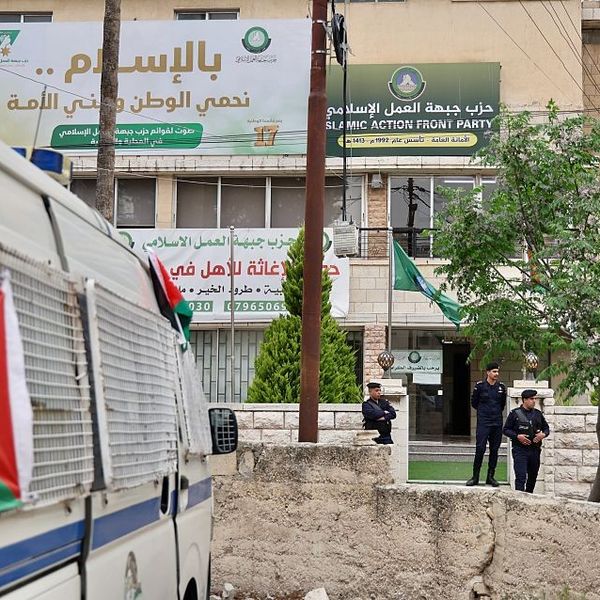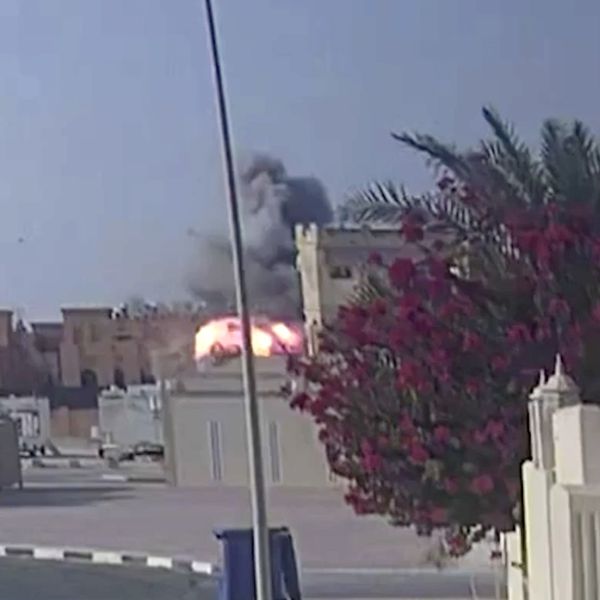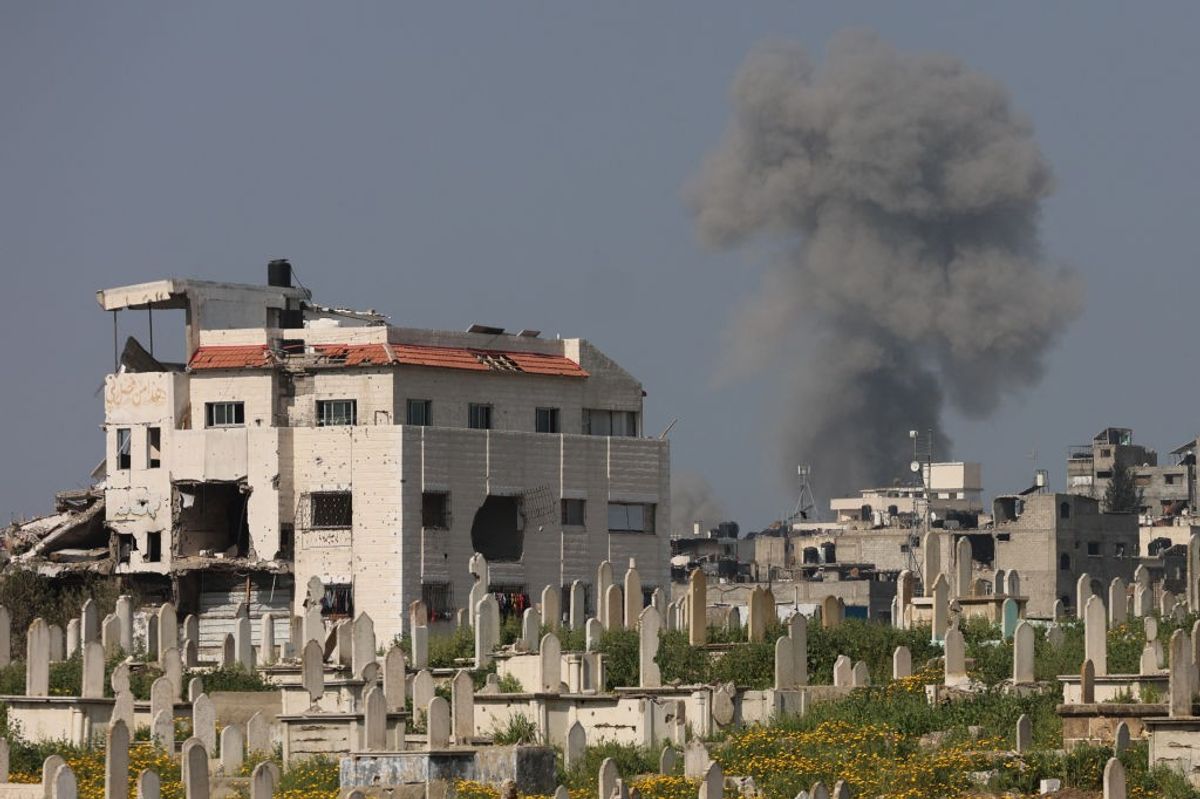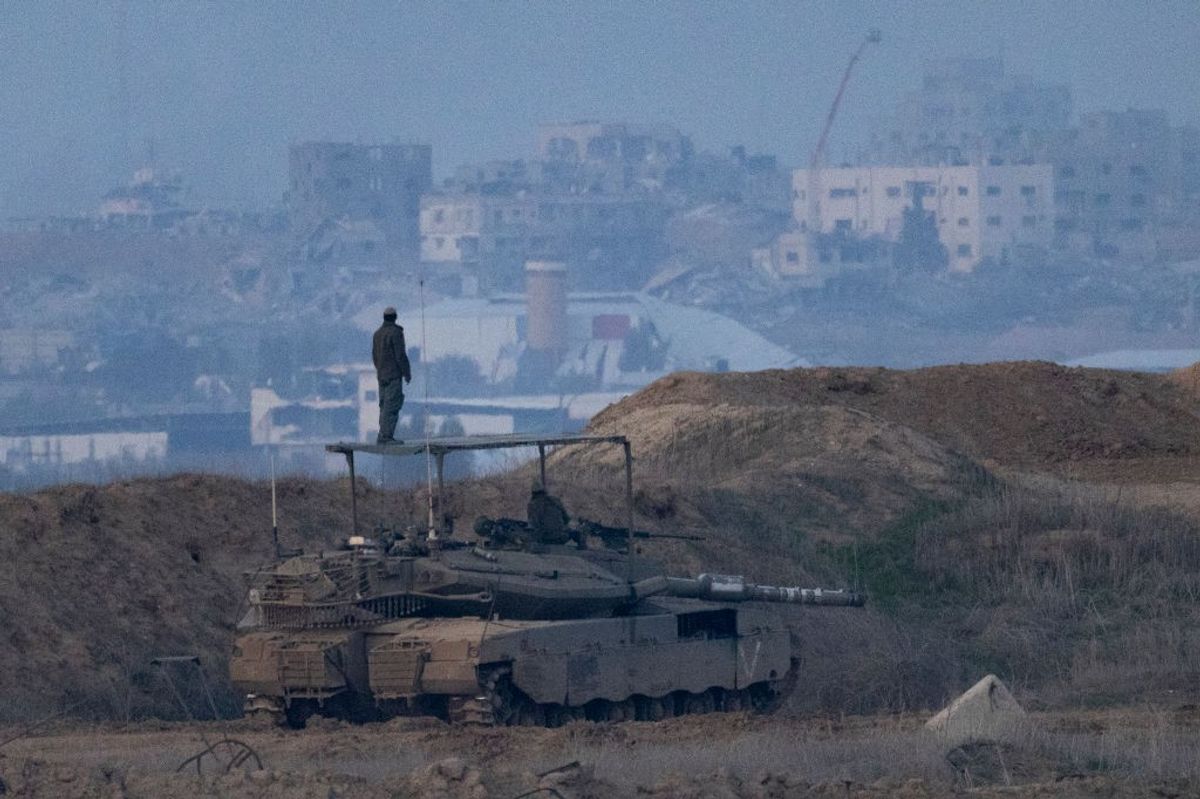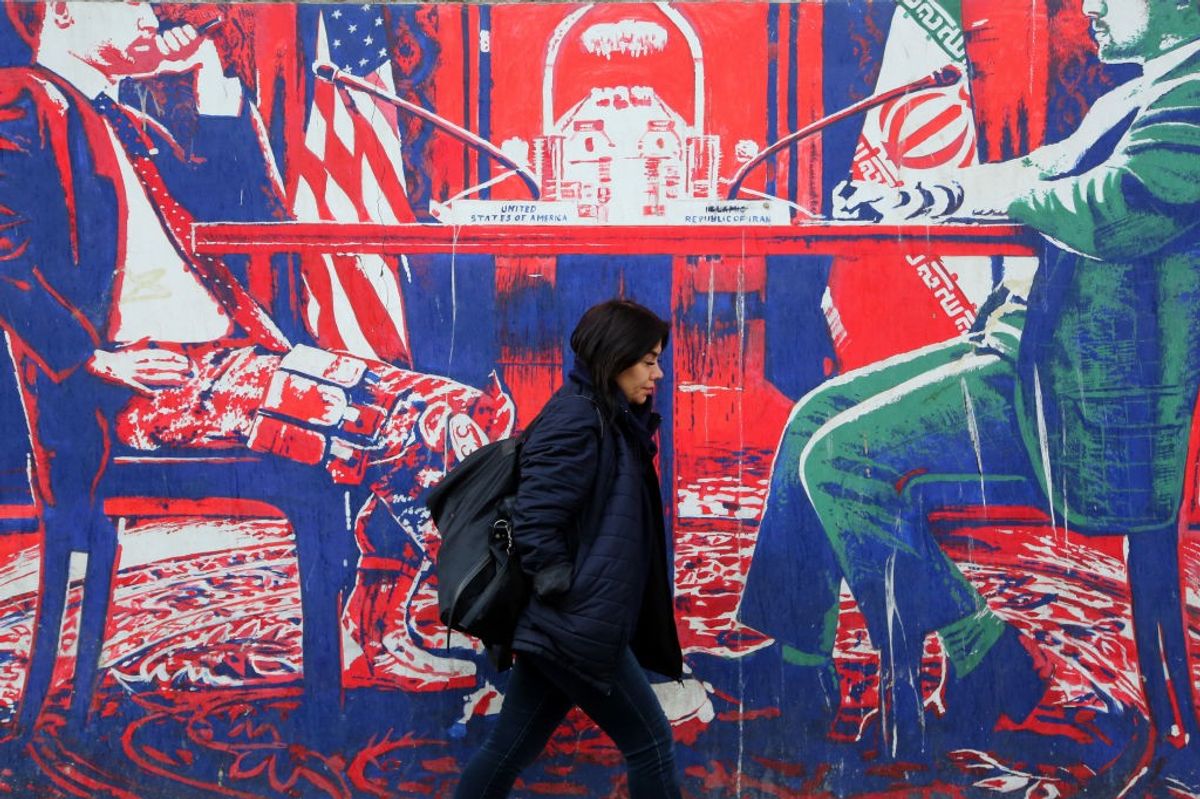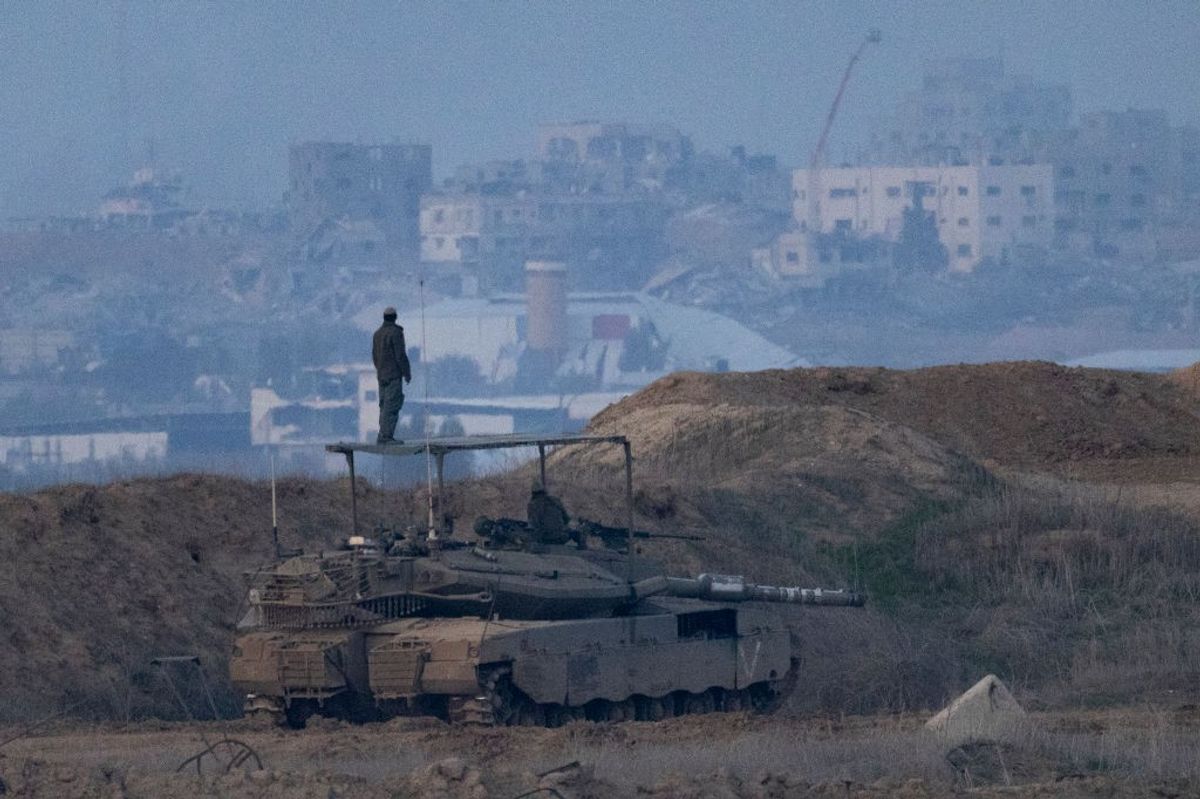OPINION — Six months after “Black Sabbath,” the October 7 Hamas attack on Israel, the streets of Tel Aviv are as busy as ever, filled with traffic and the usual urban bustle. Beneath that buzz of normalcy, there are signs of the national angst – posters of the hostages being held by Hamas, yellow ribbons emblazoned with the slogan, “Bring them home,” and a host of signs criticizing Israeli Prime Minister Netanyahu. The signs show “Bibi” with the slogan, “You are the leader; you are responsible”. At the same time, banners still fly, declaring, “Together we will win”. Just this past Saturday night, the streets of Tel Aviv, Jerusalem and other Israeli cities were filled with the largest crowds of demonstrators since October, combining demands for new elections with calls for return of the hostages in Gaza.
There are many significant national security concerns for Israel in its current war with Hamas, ranging from intelligence failures to the political fallout. Sometimes we ignore what might be the most critical national security issue for Israel – its resilience in response to the Hamas attack, the destruction of several border communities in the “Gaza Envelope”, and the evacuation of both the vulnerable northern and southern areas of the country. Coupled with the physical and emotional impact of the initial Hamas attack and the ongoing hostage saga, Israel’s endurance depends not only on the Israel Defense Forces (IDF) but on the ability of the Israeli populace to move forward after the body blow of October 7.
This is not a new circumstance for Israel; it has faced significant challenges and threats from state and non-state adversaries since its establishment in 1948.
“Resilience” is a word frequently employed to encourage preparation and the ability to “bounce back” in the event of catastrophic circumstances. In Israel, resilience connotes a deep connection between the citizens and the viability of the nation. Without that connection, it would be difficult to fathom how Israel could have flourished after so many years of conflict, even with its military might.
The Cipher Brief’s Subscriber+Reporting is reserved forSubscriber+Members. Need Access? We can help with that.
To understand resilience and Israel’s security challenges, I was fortunate to spend some time last month with one of Israel’s authorities on the subject, Dr. Meir Elran.
Meir Elran is a retired IDF Brigadier General and former Deputy Chief of Military Intelligence. In my previous visits to Israel, he hosted my graduate students at the Institute for National Security Studies (INSS), discussing responses to terrorism. He and his colleagues have analyzed polling and other data to understand the “pulse” of Israeli recovery after terrorist attacks.
Dr. Elran sees resilience not only as the capability of a society or state to respond successfully to a significant disruption. This is not only about “bounce back” or recovery, he notes, but also about rising “to a higher level of systemic functioning while preserving the system’s basic identify and values” – or, as he puts it, “bouncing forward.” Recovery is shaped, according to Elran and his colleagues, by multidimensional factors, ranging from the responses of the affected Gaza Envelope communities to the low public confidence in the ability of the current Israeli government to respond coherently to the crisis. In other words, resilience and ultimately national security are not dependent solely on the kinetic war against Hamas in Gaza. Of course, they have also examined the importance of national unity as a key to resilience even in the politically fraught Israeli system.
It is against this framework that one needs to assess the current situation and the potential for “bouncing forward” - both in the short and long term - for the Israeli state and society. Thus, it is imperative to observe the incredible impact of civilian volunteerism in the wake of the 7 October attack, and the current rebuilding of the shattered communities in the Gaza Envelope.
In the immediate aftermath of the Hamas attack and the death and destruction in the south of Israel, the current Netanyahu government floundered in response to critical civilian needs. It was civil institutions and society that successfully mobilized to begin the “bounce back” and met the immediate requirements to deal with thousands of people displaced, 1200 murdered, more than 200 kidnapped and the significant destruction of the Gaza Envelope communities. Instead of resilience being dependent on government institutions, initial recovery was led by volunteer groups such as “Brothers in Arms/Brothers and Sisters for Israel” (IDF reserve soldiers) who were the vanguard of the protesters against the Netanyahu right-wing government. The government was incapable of leading the resilience; “pro-democracy” volunteers, many of whom also marched against Netanyahu, were the linchpin of ensuring this part of national security in Israel – even to the extent of rescuing those under siege on the day of the Hamas attack.
Within days, the same volunteer groups launched a well-organized effort to provide survivors with clothing, food, shelter, and psychological support and assistance to mourners with religious rituals. In a high-tech section at the "Civilian Hub" at Tel Aviv's Expo Center, volunteers even used artificial intelligence against social media (the Hamas Go-Pro videos) to try to identify the missing. Government officials largely avoided the Civilian Hub.
I think it’s fair to assess the official Israeli government response as abysmal, an absent leadership in a domestic emergency. In short, the government continues to suffer from a lack of trust and confidence from the civilian population. Six months in, the civil efforts continue, with volunteers stepping in to harvest fields and provide for those displaced both from the south and the north, where conflict with Hezbollah led to the evacuation of 60,000 people.
A key part of recovery must be the return of inhabitants to their communities in the south and the north. This is key to Israel’s national security ethos – not to abandon the communities in these border areas, and to enable their rebuilding. Recent surveys indicate that at least 70% of these residents intend to return to their homes when possible. A good number, perhaps as much as 50%, have already returned to homes that are inhabitable. However, there are communities in the south that were terribly devastated, both physically and emotionally, by the Hamas attack; not only are physical structures destroyed, but survivors have the trauma of having witnessed atrocities committed against their families, friends and neighbors.
It's not just for the President anymore. Are you getting your daily national security briefing?Subscriber+Members have exclusive access to theOpen Source Collection Daily Brief, keeping you up to date on global events impacting national security. It pays to be aSubscriber+Member.
How can these damaged communities be resurrected - and how is this critical to Israeli security?
To understand this part of the resilience strategy, I spoke with Alon Futterman, CEO of the Kfar Azza Foundation. Kfar Azza is a kibbutz success story, a storied, socialist multi-generational community within Israel’s original borders with just under 1000 members. About 40% of the homes on the kibbutz were destroyed and left physically uninhabitable after the Hamas attack. Other homes were declared “violated” due to the atrocities committed within their walls, making it psychologically impossible for the survivors to return. 65 people at Kfar Azza were killed in the attack on 7 October and 18 hostages were taken; five hostages are still currently held by Hamas. The kibbutz members are activists among the Israeli hostage family community.
The focus of their resilience, according to Futterman, is to support the surviving community, residents currently living at Kibbutz Shefayim and at several hotels in Tel Aviv, ensuring social services and programming to maintain the community’s vitality and identity. In the late summer, the plan is to reunite the Kfar Azza community about 13 miles from their homes at Kibbutz Ruchama, where they may spend 2 -3 years as Kfar Azza is rebuilt. The resilience strategy, short and long term, focuses on five pillars: education, health, welfare, community and commemoration. Their long-term strategy seeks not only to reconstitute the community but to make it “attractive” to new residents – an ambitious undertaking. Revitalization for the entire Gaza Envelope area is also critical as social, health and education services have always been sourced regionally.
The survivors of Kfar Azza recognize the tremendous efforts of volunteer organizations to assist them; they are less enthused about the government’s initial response and concerned about future cash flow and execution of aid promised by the government. Some 800 of the Kibbutz members are still committed to returning. Why? Futterman notes both the personal and national impetus – two key sources that strengthen resilience. At the basic level, they want their homes back; on the national level, this is core Zionism – a kibbutz within the borders of the State of Israel with many of its founders still alive. “This is their legacy,” Futterman notes. They don’t want to abandon their community to their enemies, and they want to rebuild a bigger and better Kfar Azza.
As the political situation in Israel returns to its confrontational, pre-October 7 mode, the issue of resilience as underpinning its national security becomes even more critical. The civilian-led resilience efforts provide a level of security that can help Israel maintain some equilibrium. It’s no coincidence that the party of Minister without Portfolio Benny Gantz is named “Kahol Lavan Hosen LeYisrael” – “Blue and White Resilience for Israel”. Israel’s National Security is ultimately dependent on the significant challenge of resilience, rebuilding, and strategic thinking for “The Day After.”
The Cipher Brief is committed to publishing a range of perspectives on national security issues submitted by deeply experienced national security professionals. Opinions expressed are those of the author and do not represent the views or opinions of The Cipher Brief.
Have a perspective to share based on your experience in the national security field? Send it to Editor@thecipherbrief.com for publication consideration.
Read more expert-driven national security insights, perspective and analysis in The Cipher Brief



